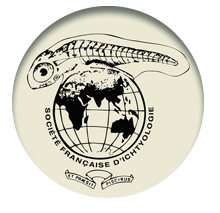Effects of different cooking treatments on flesh fatty acid composition of total lipids in farmed Sea bass Dicentrarchus labrax (Moronidae)
The aim of this work is to compare the effects on flesh lipids and fatty acids in farmed Sea bass (Dicentrarchus labrax) of different cooking treatments: boiling, oven cooking and frying in corn oil (FWSO) and sunflower oil (FWCO). Fatty acid contents in muscle of fresh (control), boiled, oven cooked, FWSO and FWCO farmed Sea bass collected from Tunisian Station of Aquaculture (Hergla, Tunisia) were analysed. Total lipids were extracted with chloroform and methanol. Fatty acid methyl esters, obtained using KOH in methanol and hexane, were analysed using capillary gas chromatography. The descriptive statistics and one-way analysis of variance were conducted. The significance level was selected at p < 0.05. Our results revealed that raw farmed Sea bass was rich in polyunsaturated fatty acids (PUFA) n-3, particularly eicosapentaenoic (EPA) and docosahexaenoic acids (DHA), resulting from the abundance of these fatty acids in food. After boiling and oven cooking, total lipid decreased by 55% and 39%. After frying with the two oils they increased from 86.6 to 120 and 150 mg/g of tissue fresh weight (p < 0.05), respectively. Saturated fatty acids (SFA) decreased significantly in FWSO and FWCO Sea bass (p < 0.05) from 31.54% of total fatty acids (TFA) to 17.54% of TFA and 17.97% of TFA but increased in boiled and oven cooked fish (32.42% of TFA and 32.08% of TFA, respectively). Meanwhile, the monounsaturated fatty acid (MUFA) levels were found to be higher in cooked fish compared to raw one (p < 0.05), except for FWSO fish. N-3 PUFA decreased after boiling, oven cooking, FWSO and FWCO from 29.34 to 22.02; 26.67; 4.92 and 4.22% of TFA respectively. However, the level of n-6 PUFA increased particularly for FWSO and FWCO (48.53% of TFA and 46.32% of TFA, respectively). The n-6/n-3 ratio increased in farmed Sea bass after boiling, oven cooking, and FWSO and FWCO from 0.35 to 0.38; 0.59; 10.26 and 12.59 (p < 0.05), respectively. After cooking process, oven cooked Sea bass appeared to be the most valuable source of essential n-3 PUFA, particularly eicosapentaenoic acid (EPA) and docosahexaenoic acid (DHA).


